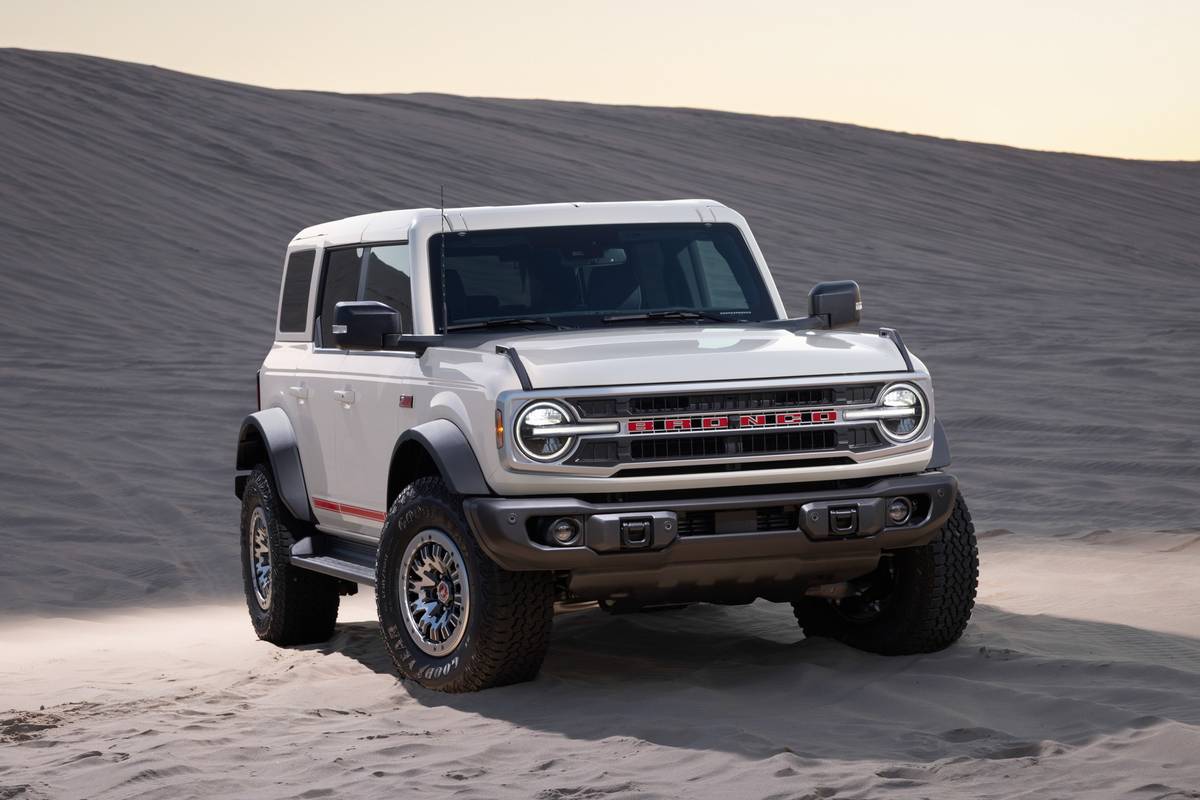AZCentral.com's view
The rise to fame and glory for the Lexus brand has been rapid indeed.
In the 12 years since Toyota’s luxury division introduced the LS 400, Lexus has charged to the top of the world’s elite automakers, forcing such high-end brands as Mercedes-Benz, BMW, Cadillac and Lincoln to take notice.
Producing high-quality, high-end automobiles designed to appeal to the rich American market, Lexus has turned into a brand name with prestige comparable to the top Europeans. Maybe not always the most innovative – there has always been a marked resemblance to Mercedes models in design and character – Lexus has built its reputation on the fundamentals, such as reliability and drivability, while boasting the style, opulence and exclusivity that creates the luxury aura.
The latest flagship of the Lexus fleet, the LS 430, is a big, conservative transport that comes laden with all forms of electronic gadgetry, a lovely interior and solid performance that belies its heft and soft suspension.
The LS scores straight-line numbers that promise driving excitement. A 290-horsepower V-8 yanks the 2-ton sedan to 60 mph in just 6.3 seconds, according to Lexus, and four-wheel disc brakes haul it down from 60 to zero in just 117 feet, according to AutoWeek magazine.
But the LS is not to be confused with a sports sedan. The driver who goes for the engagement of a BMW is not going to get the same enjoyment from the Lexus.
This is a car for drivers who are put off by the sharp edges of BMW or the stiff precision of Mercedes. The ride is cushioned, the seats are soft and the performance, though impressive, is sedate. This is a cruiser designed for comfort, but with the engineering finesse that allows it to cruise back roads with unruffled aplomb.
With the suspension set in the softer of two settings, the big sedan rebounded unpleasantly over bumps and heaves. The firmer setting was more to my liking.
That powerful engine displaces just 4.3 liters, a dwarf in V-8 terms, that benefits from the technological advantages of a 32-valve head with variable valve timing. The power is right there at any rpm, smooth and responsive.
Less impressive was the five-speed automatic transmission. Linked with this sharp engine, shifting felt sluggish.
The new LS is longer and taller than the LS 400 it replaces, with an improvement in passenger space. Rear-seat passengers will appreciate the extra leg and headroom.
The interior was trimmed in fragrant leather and wood, with beautiful perforated, white-leather seats that looked vintage.
There was so much trick stuff aboard the LS that I’ll just list some major standouts: adaptive variable suspension that senses road surface and driving patterns to soften or stiffen accordingly; adaptive cruise control that uses radar to keep pace with the vehicle ahead, and climate-controlled, ventilated seats that give you a back massage.
Also, a DVD navigation system with voic e-command control; intuitive parking assist that helps you maneuver into a space with radar sensors; windshield wipers that turn themselves on if they sense rain; power door latches that pull the doors closed; Lexus Link safety and security system (actually General Motors’ Onstar); rear seat adjusters with memory controls; eight airbags, and a Mark Levinson stereo system that’s a real knockout. Much of that exotic equipment was part of a high-priced option package, the $12,800 Ultra Luxury Selection.
Controls for the navigation system, climate control and stereo were integrated into a touch-screen video that functioned fairly well. The system is more intuitive than Mercedes’ similar but messier array.
Comparing the LS to its closest competition, the Mercedes S430, the Lexus has a softer feel and a lighter touch, favoring the American approach to a luxury car.
Which is part of the appeal.
Latest news


2025 Tesla Cybertruck Review: Wedge Issues

